19,413 原创艺术品,限量版和版画:
如何定义天真的艺术风格 ?
什么是朴素艺术?
什么是朴素艺术,您如何定义朴素艺术?中殿绘画是一种艺术风格,是由像亨利·卢梭这样对艺术一窍不通的艺术家开创的。大多数时候,朴素艺术被定义为由没有接受过专业艺术家培训和教育的人创作的视觉艺术。当专业艺术家试图复制这种风格时,它通常被称为“原始主义”。
朴素艺术的定义是什么?
朴素艺术通常被定义为由没有像专业艺术家那样接受过正规培训和教育(解剖学、艺术史、技术、视角、观看方式)的人创作的视觉艺术。当训练有素的艺术家试图复制这种风格时,它有时被称为原始主义、伪朴素艺术或假朴素艺术。
与民间艺术不同,朴素艺术不必来自特定的流行文化背景或传统。事实上,至少在发达经济体和自印刷革命以来,不可能不了解通过流行印刷品和其他媒体传播的当地美术传统。天真的艺术家知道“美术”惯例,例如图形透视和构图惯例,但他们不能或不会充分利用它们的潜力。另一方面,局外人艺术(也称为“art brut”)是指来自相似背景但与主流艺术世界关系不大的作品。
朴实的艺术素以童真纯朴着称,这也是它经常被抄袭的原因。这类画作的画法通常是平面的,表现深度的方式简单。亨利·卢梭,法国后印象派画家,生于 1844 年至 1910 年,被巴勃罗·毕加索发现,是“素朴艺术”最重要的画家之一。
对于该术语的含义以及它与民间艺术和局外人艺术等其他术语“结束”的位置存在一些分歧。 Nave art 通常用于描述自学成才的艺术家创作的美术作品,例如绘画和雕塑。另一方面,民间艺术是指可以在日常生活中使用的东西。但这种差异一直存在争议。 “省”是另一个可以使用的词,特别是对于绘画和建筑。它主要用于描述受过一些传统训练但作品偶然达不到大都市或宫廷标准的艺术家的作品。
朴素艺术的特点是什么?
人们通常认为朴素艺术是由没有接受过(或没有接受过多少)培训或学位的局外人创作的作品。在 20 世纪之前,情况确实如此,但现在出现了朴素艺术的学校。朴素艺术现在是一种得到充分认可的艺术类型,可以在世界各地的画廊中看到。
朴素艺术的特征与绘画的形式方面不太吻合,尤其是当不遵循三个透视法则时(如文艺复兴时期的进步画家所描述的):
- 距离越远,物体的体积越小,
- 颜色随着距离的增加而变化,-随着距离的增加,细节变得不那么清晰,
以下是结果:
- 透视效果在几何上是错误的(它们看起来像中世纪的儿童图画或绘画,但这就是比较结束的地方)。
- 强烈使用图案,在构图的所有平面上使用未经提炼的颜色,背景没有弱化。 -同样注意细节,包括那些应该被遮蔽的背景。
人们说朴素的艺术很容易被发现,因为它并不复杂。然而,它变得如此流行和众所周知,以至于许多例子都可以称为“伪天真”。
“Pseudo nave”或“faux nave”艺术是更模仿或自觉的艺术家的作品,其作品看起来比原作更复制。 “朴素”艺术是没有上过艺术学校或学院的艺术家的作品,例如亨利·卢梭或阿尔弗雷德·沃利斯。
由于自学作为一种学习方式在现代变得越来越流行,因此在现代艺术家中不太可能发现严格的天真。在世艺术家并不总是喜欢幼稚的分类,但随着更多尊贵的信号为人所知,这种情况可能会改变。匈牙利凯奇凯梅特现在有朴素艺术博物馆;科瓦伊卡,塞尔维亚;拉脱维亚里加;西班牙哈恩;巴西里约热内卢;法国维克;和巴黎。 Gary Bunt、Lyle Carbajal、Gabe Langholtz、Gigi Mills、Barbara Olsen、Paine Proffitt 和 Alain Thomas 都是在世的讲英语的艺术家,他们承认自己有一种天真的风格。
“原始艺术”是没有学过艺术的人经常用来形容它的另一个词。不过,从历史上看,它更多地用于描述西方学术界认为在社会或技术上属于“原始”文化的艺术,例如美洲原住民、撒哈拉以南非洲和太平洋岛屿艺术(请参阅部落艺术)。这不同于被称为“原始主义”的受“原始”启发的自我意识运动。民间艺术是另一个与民间艺术相似但不是一回事的术语。
还有术语“navism”和“primitivism”,通常用于描述以朴素艺术为风格的专业画家(如 Paul Gauguin、Mikhail Larionov、Paul Klee)。
朴素绘画的特点是什么?
朴素的艺术有时被用来描述没有专业培训或学位的人制作的艺术。 20世纪以前是这样,但现在有中堂画的学院。现在,朴素艺术是一种众所周知的艺术形式,可以在世界各地的画廊中看到。绘画的形式部分与构成朴素艺术的东西出奇地相似,尤其是在不遵循三个透视规则的情况下。
-随着事物离得越远,它们的尺寸越小。
- 当您远离一种颜色时,它会变得不那么鲜艳。
-当你离开时,细节变得不那么清晰。
结果之一是,从几何角度来看,透视的效果是错误的。构图中的任何一个背景都没有弱化,花样繁多。所有细节都得到了同样的关注,即使是背景中应该更暗的细节。
人们说朴素的艺术很容易识别,因为它没有很多细节。但因为它已成为一种广为人知的风格,许多作品可以归入伪朴素或原始主义类别。自学成才作为一种学习方式正变得越来越流行,因此严格的天真在当今的艺术家身上并不常见。
在世艺术家可能并不总是接受简单的分类,但随着更多尊严信号的出现,这种情况可能会改变。
Discover original contemporary Naive Art artworks on ArtMajeur
Original contemporary Naive Art is a type of artwork that features simple, childlike shapes, bold colors, and a lack of perspective. The main types of supports used in Naive Art are canvas, paper, and wood. The materials used to create these artworks can range from acrylic and oil paints to colored pencils and markers. What makes this type of original artwork unique is its ability to transport the viewer to a simpler time and evoke feelings of nostalgia and joy. Naive Art is often created by self-taught artists who have a raw, untrained talent that lends itself to a charming and endearing aesthetic. The result is a body of work that is refreshingly authentic and relatable.
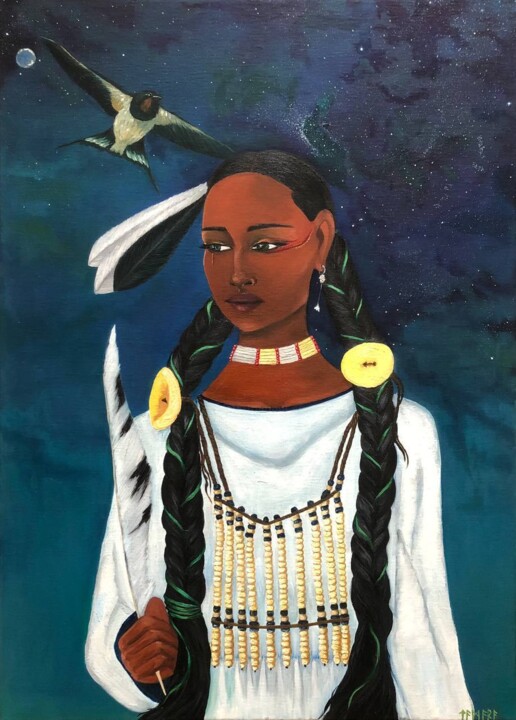
©2022 Tamaraandreevna_art
Origins and History
Naive Art, also known as Primitive Art or Folk Art, is a genre of art that emerged in the late 19th century. Naive Art pieces are characterized by their simplicity, childlike imagery, and lack of formal artistic training. The movement’s name comes from the French word "naïf," meaning "naive" or "innocent." The earliest examples of Naive Art can be traced back to the 17th century, with the works of French artist Henri Rousseau being some of the most well-known. The movement gained popularity in the early 20th century, with artists such as Grandma Moses and Horace Pippin gaining international recognition for their work. Naive Art has continued to evolve throughout the years, with contemporary artists putting their own unique spin on the style. Today, Naive Art continues to be celebrated for its childlike charm and whimsical imagery.
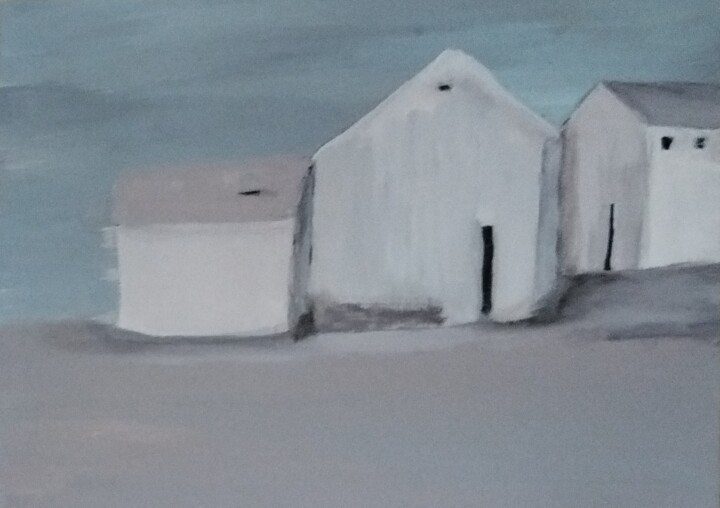
©2025 Марина Хребтова
Evolutions of theses works in the contemporary art market
Original contemporary Naive Art has undergone a significant transformation in recent years, reflecting the changing tastes of the art market. This style of art, known for its childlike simplicity and lack of formal training, has evolved to encompass a wider range of themes and techniques. Artists are now exploring more complex subject matter, such as social issues and political commentary, while also experimenting with new mediums and textures.
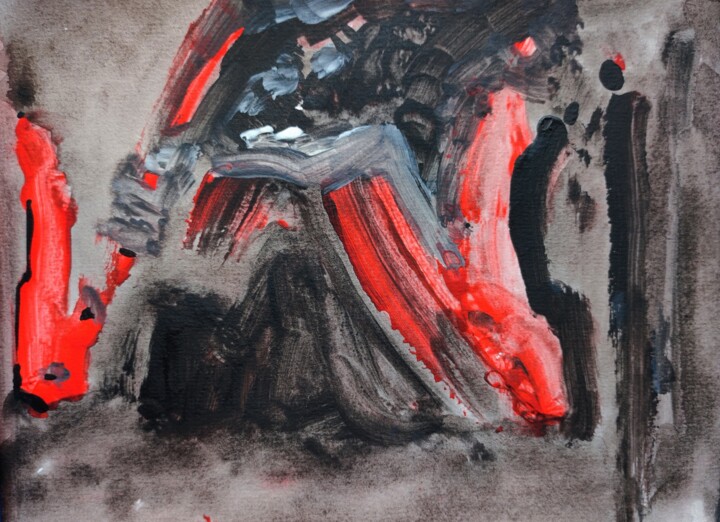
©2025 Milto Sideris
Related Famous Artists
Contemporary artists who are recognized for their exceptional work in contemporary Naive Art include:
Andre Bauchant, a French artist who gained recognition for his lively and colorful paintings of landscapes and still-life compositions. Bauchant’s works express a sense of simplicity and innocence, reflecting the spirit of Naive Art.
Séraphine Louis, a French painter known for her unique style of painting, which is characterized by its strong use of color and bold brushstrokes. Louis’s works are often inspired by religious themes and nature.
Henri Rousseau, a French post-impressionist painter who is recognized as one of the pioneers of Naive Art. Rousseau’s works are characterized by their flatness, bold color, and simplified forms, which reflect his lack of formal training.
Nikifor Krynicki, a Polish painter known for his depictions of life in the Polish countryside. Krynicki’s works are characterized by their vibrant colors, playful compositions, and a sense of childlike innocence.
Grandma Moses, an American folk artist who gained recognition for her paintings of rural life in the United States. Moses’s works are characterized by their simplicity, bright colors, and charming depictions of everyday life.
These artists have made significant contributions to the contemporary Naive Art movement, and their works continue to inspire and captivate audiences around the world.
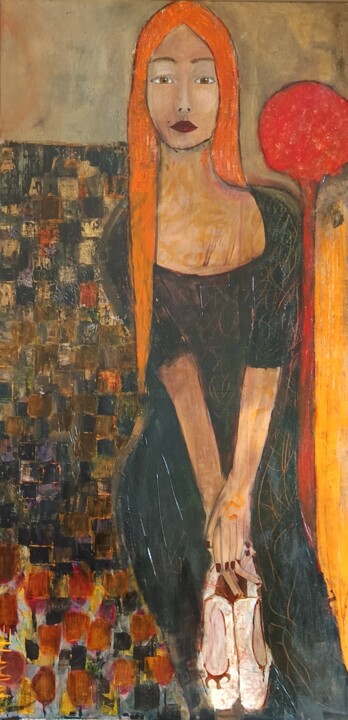
©2019 Marie-Pierre Noel
Notable original contemporary Naive Art artworks
"La Danse" painted by Haitian artist Hector Hyppolite in 1946, depicts a colorful and whimsical scene of dancers in traditional Haitian dress. The painting is filled with vibrant hues and intricate patterns, capturing the energy and joy of the dance.
"Tree of Life" by Nigerian artist Prince Twins Seven-Seven, created in 1984, features a densely populated and intricately detailed tree with a multitude of human and animal figures interwoven with its branches. The piece is a celebration of life and the interconnectedness of all living things.
"Le Coq" by French artist Henri Rousseau, painted in 1899, portrays a proud and regal rooster surrounded by lush foliage and exotic animals. The painting’s bold colors and flattened perspective are hallmarks of Rousseau’s naively stylized approach to painting.
"Self-Portrait with Thorn Necklace and Hummingbird" by Mexican artist Frida Kahlo, completed in 1940, is a haunting and deeply personal depiction of the artist’s physical and emotional pain. The painting features Kahlo wearing a thorn necklace and a dead hummingbird, symbolizing her physical suffering and the loss of her fertility.
"La Reve" by French artist Séraphine Louis, painted in 1927, is a dreamlike and otherworldly depiction of a fantastical garden. The painting’s swirling colors and ethereal quality capture the sense of wonder and mystery that permeates Séraphine’s work.
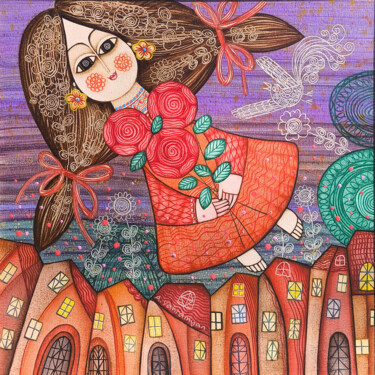
Armen Vahramyan
油在帆布上 | 15.8x15.8 in
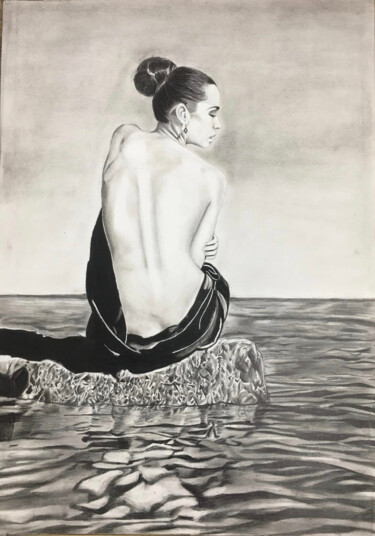
Gaurav Gupta
石墨在纸上 | 23.4x16.5 in
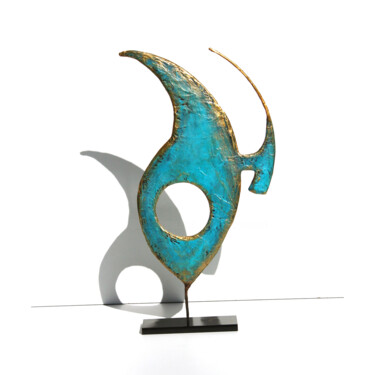
Vanessa Renoux
雕塑 - 金属 | 17.7x9.8 in
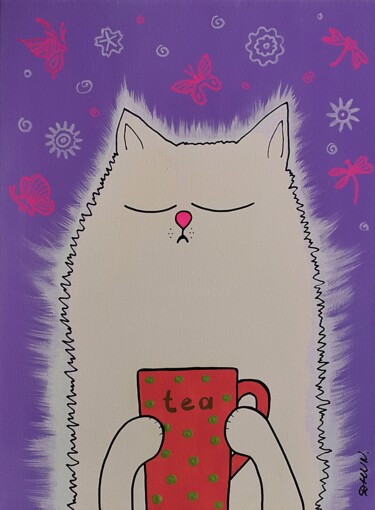
Daheaven Art
丙烯在帆布上 | 15.8x11.8 in

Anita Zotkina
油在帆布上 | 14x18 in
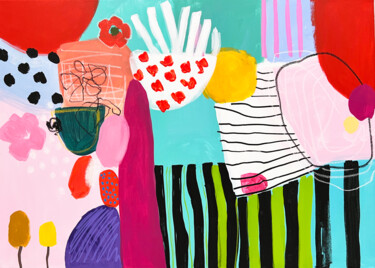
Sasha Robinson
丙烯在帆布上 | 19.7x27.6 in






























